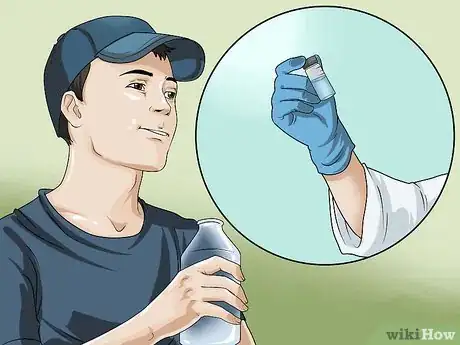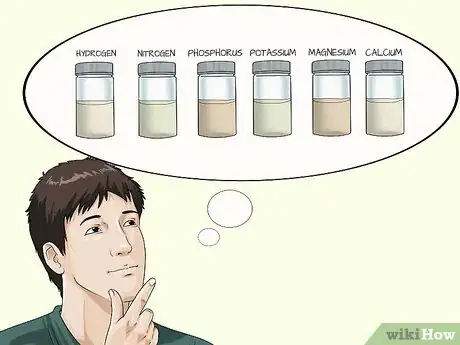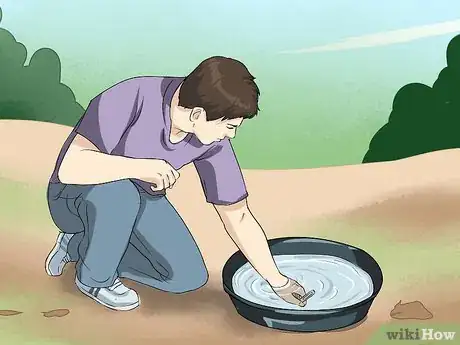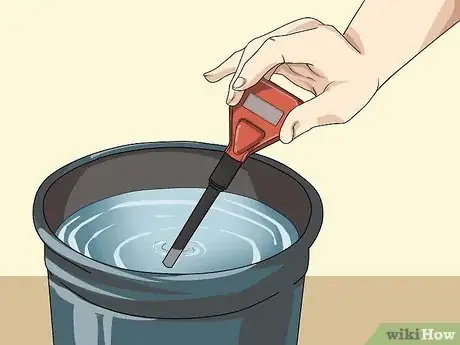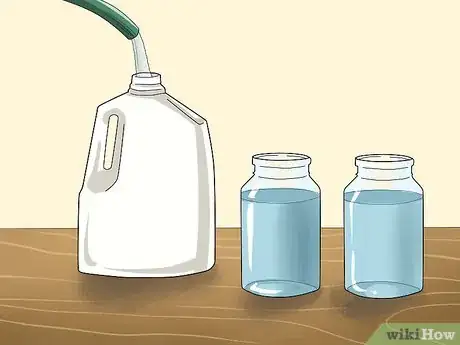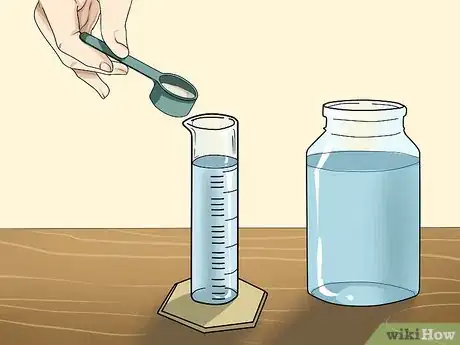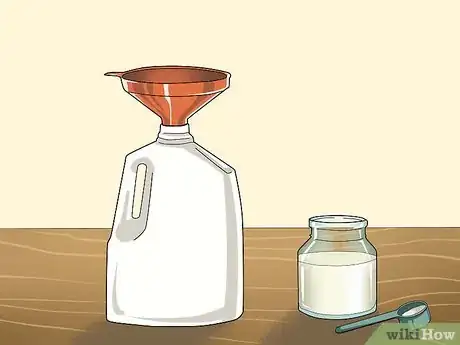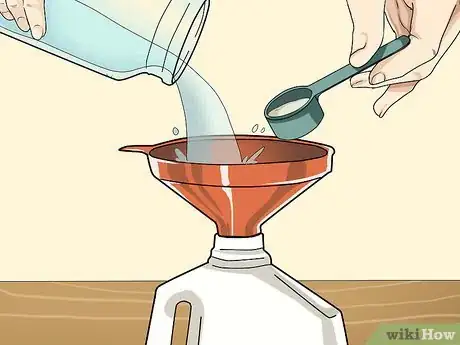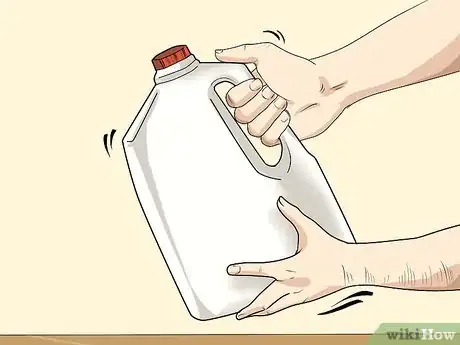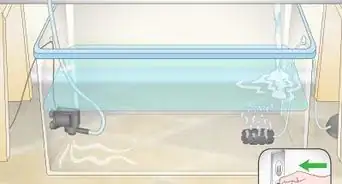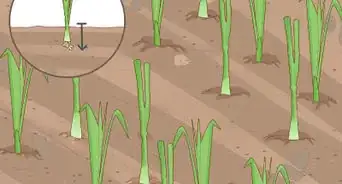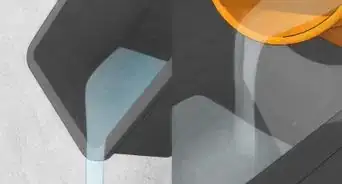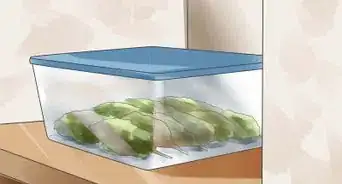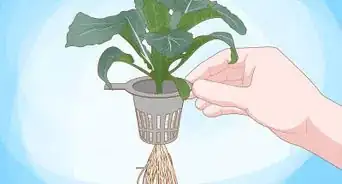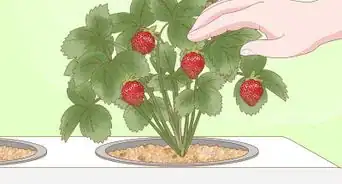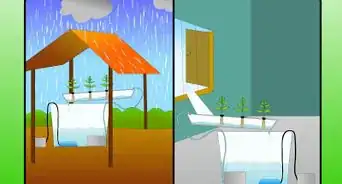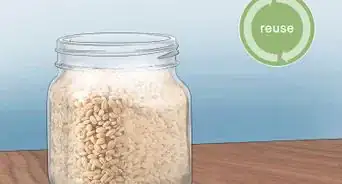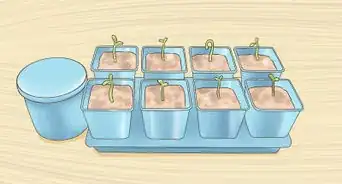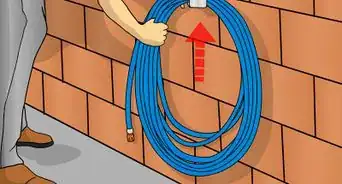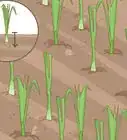This article was co-authored by Ben Barkan. Ben Barkan is a Garden and Landscape Designer and the Owner and Founder of HomeHarvest LLC, an edible landscapes and construction business based in Boston, Massachusetts. Ben has over 12 years of experience working with organic gardening and specializes in designing and building beautiful landscapes with custom construction and creative plant integration. He is a Certified Permaculture Designer, is licensed Construction Supervisor in Massachusetts, and is a Licensed Home Improvement Contractor. He holds an associates degree in Sustainable Agriculture from the University of Massachusetts Amherst.
wikiHow marks an article as reader-approved once it receives enough positive feedback. This article received 16 testimonials and 93% of readers who voted found it helpful, earning it our reader-approved status.
This article has been viewed 311,724 times.
There are 2 basic methods to providing nutrients to plants in hydroponic growing. You can either purchase premixed nutrients, or you can mix your own. Premixed nutrients provide everything your plant will need, but your individual water may require slightly different nutritional levels. Mixing your own nutrients is both more economical and allows for a wider range of flexibility.
Steps
Choosing Nutrients
-
1Know what's in your water. Send your water to a lab to be tested, if you can. With good, "soft" water, you'll be able to add any nutrients your plants need for their optimal growing season. With "hard" water, you may need to use reverse osmosis methods to filter out any unwanted heavy metals present in your water.
- You can also use a dissolved solids meter to check your water regularly. This is also called an electrical conductivity (EC) or parts per million (PPM) meter.
- Calcium and magnesium carbonates are quite common ingredients in both tap water and well water. Each are necessary nutrients for plant growth, but in limited amounts. Knowing how much of these elements are present in your water determines how much, if any, you need to add.
-
2Familiarize yourself with essential macronutrients. The essential nutrients used include calcium nitrate, potassium sulphate, potassium nitrate, mono potassium phosphate, and magnesium sulphate. Each element involved in these nutrients provides a different benefit.
- Hydrogen forms water by combining with the oxygen.
- Nitrogen and sulfur are essential to the supply of amino acids and proteins.
- Phosphorus is used in photosynthesis and overall growth.
- Potassium and magnesium act as catalysts in the creation of starches and sugars.
- Magnesium and nitrogen also play a role in the production of chlorophyll.
- Calcium is a part of the make-up of cell walls, and plays a role in the growth of cells.
Advertisement -
3Choose the right micronutrients. Micronutrients, also called trace elements, are also essential, but they are only required in very small amounts. These elements effect growth, reproduction, and the effect that other nutrients have on the plant.
- Micronutrients used include boron, chlorine, copper, iron, manganese, sodium, zinc, molybdenum, nickel, cobalt, and silicon.
- There should be at least 10 trace elements present in your nutrient mix.[1]
-
4Check your water temperature. The best temperature for plants is tepid: neither warm nor cold to the touch. If your solution is too cold, your plants won't germinate. They may mold or rot. If your solution is too hot, your plants might die from stress or oxygen deficiency. The optimal temperature for water is between 65 degrees (18 C) and 80 degrees (27 C).
- Plants grown in colder climates will thrive in cooler water, while plants grown in warmer regions prefer warmer water.
- When you add new water to your reservoir, make sure it's approximately the same temperature as the existing reservoir water.
-
5Keep the right pH balance. You can use a pH meter to check your balance. You want your pH balance to be between 5.5 and 7.0.[2] Your water's pH balance ultimately impacts the plants' ability to take in nutrients.
- It's normal for pH balances to wander up and down. The balance will naturally change as elements are absorbed by the plants. Avoid adding too many chemicals as a reaction to the varying pH balance.
- If you have poor quality growing medium, this may affect the stability of your pH balance.
- Most municipal water systems raise the pH level of their water by adding calcium carbonate. The average pH balance of city water is often as high as 8.0.
- Remember that pH measuring kits will show different levels in different temperatures. Check your water temperature before adding chemicals to your water.
Mixing the Nutrients
-
1Fill your containers with water. Most hydroponic recipes call for 2-3 reservoirs. Make sure your containers are food-grade. If you can, use distilled water or water that has been run through a reverse osmosis system. Tap water often contains ions and other elements that can prove harmful to a hydroponics system.[3]
- For a smaller nutrient reservoir, an empty 1 gallon (4 liter) milk jug works well. For a larger amount, a use a 5 gallon water container.
- If you can't find either distilled water, let your water sit open for 24 hours to allow any chlorine to dissipate.
- If you plan to use tap water, get it tested to learn what's in it.
-
2Measure out the nutrients. In a 2-container reservoir system, you'll want to have 1 container with crop-specific nutrients, such as potassium nitrate or individual micronutrient chelates. The other container may be filled with a premixed fertilizer or another general nutrient blend.[4]
- Use a plastic chemical scoop and sterilized filter paper to hold dry chemicals. Measure liquid nutrients in a graduated cylinder or beaker.
- For example, for a full 5-gallon (20-liter) container of water, measure out 5 teaspoons (25 ml) of CaNO3, 1/3 teaspoon (1.7 ml) of K2SO4, 1 2/3 teaspoons (8.3 ml) KNO3, 1 1/4 teaspoon (6.25 ml) of KH2PO4, 3 1/2 teaspoons (17.5 ml) MgSO4, and 2/5 teaspoon (2 ml) trace element compound.
-
3Rest a funnel into the mouth of the reservoir. You can mix the nutrients even without a funnel, but doing so could result in spills that could upset the nutritional balance of the solution. Using a small plastic funnel makes it easier to pour the chemicals into the container.[5]
- Some nutrients and other additives can be irritating or harmful to the skin. Using a funnel should help you avoid spills.
- Check the pH of the water in your hydroponics system after adding the nutrients. Hydroponics nutrients usually lower the pH balance of neutral water, so you may need to use pH additive to realign the balance afterward.
-
4Add the nutrients to the water. Pour the nutrients in one by one, going slowly to prevent overflow, spills, or similar loss of nutrients. A slight loss of nutrients will not cause severe damage to your system, but the sooner your plants can adjust to the nutrient supply, the more effective the solution will be.[6]
- The amount of nutrient solution you need will mostly depend on the reservoir your hydroponics unit uses. There is no precise way to determine the amount, and figuring it out may require experimentation.
- In general, you should use at least enough solution so that the reservoir pump does not suck in air once the pump turns on.
-
5Cap and shake the container. Make sure that the cap is securely screwed on or snapped into place. Shake the container using both hands for 30 to 60 seconds to combine the nutrients. If the cap cannot be fixed on tight, you may need to hold it down with one or two fingers as you shake.[7]
- Note that if the container is too large or heavy to shake, you can stir the mixture with a long dowel or other rod.
- Shaking often proves the most thorough way to combine the ingredients, but stirring will also work as long as you do it for a greater length of time.
Community Q&A
-
QuestionIs the nutrient solution the same for all the plants?
 Community AnswerNo. Every plant needs a specific formula for their specific age and if it is vegetative state or flora.
Community AnswerNo. Every plant needs a specific formula for their specific age and if it is vegetative state or flora. -
QuestionOnce I have mixed the hydroponics in a jar, for how long can I store the mix without it going bad?
 Max.terpsCommunity AnswerThat depends on the type of nutrients you have used, but as a general guide, you should only mix enough nutrient solution that you will need for the next 2 weeks. Growing hydroponically means the plants are receiving all their nutrition through this solution being delivered to them at regular intervals, so I am not sure how long you can feed your plant(s) with a jar full of nutrient solution, unless for seedlings. An established plant could use liters of nutrient solution every day, depending on its size and how much light it is being grown under.
Max.terpsCommunity AnswerThat depends on the type of nutrients you have used, but as a general guide, you should only mix enough nutrient solution that you will need for the next 2 weeks. Growing hydroponically means the plants are receiving all their nutrition through this solution being delivered to them at regular intervals, so I am not sure how long you can feed your plant(s) with a jar full of nutrient solution, unless for seedlings. An established plant could use liters of nutrient solution every day, depending on its size and how much light it is being grown under. -
QuestionWhere can I get plant nutrients?
 Community AnswerYou can buy it at hydroponic stores. You can also find it in online stores.
Community AnswerYou can buy it at hydroponic stores. You can also find it in online stores.
Warnings
- Watch the plants for signs of pH or nutrient imbalance after adding the nutrients. Yellowing leaves signify that the nutrient level is low, while curling leaves or burnt leaves indicate that the nutrient level is high.⧼thumbs_response⧽
References
- ↑ http://www.motherearthnews.com/organic-gardening/hydroponic-garden-zmaz93fmztak.aspx?PageId=1
- ↑ Ben Barkan. Garden & Landscape Designer. Expert Interview. 14 April 2020.
- ↑ https://www.greenandvibrant.com/distilled-water-for-plants
- ↑ http://edis.ifas.ufl.edu/pdffiles/cv/cv21600.pdf
- ↑ https://allseasonsnashville.com/beginners-guide-to-hydroponics/
- ↑ http://scienceinhydroponics.com/2010/07/preparing-your-own-hydroponic-nutrients-a-complete-guide-for-beginners.html
- ↑ http://scienceinhydroponics.com/2010/07/preparing-your-own-hydroponic-nutrients-a-complete-guide-for-beginners.html
About This Article
To mix hydroponics nutrients, fill a food-grade container with distilled water. Place a small plastic funnel into the mouth of the container and add the nutrients to the water one at a time. Put the cap on the container and shake it vigorously with both hands for 30 to 60 seconds to combine the nutrients, then add them to your hydroponics system. Be sure to check the pH of the water in your system after adding the nutrients and adjust it as needed! For tips on figuring out which nutrients you need to add to your system, read on!
